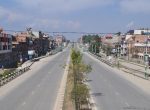
9. For the purpose of this publication, the Holm-Sidak procedure was used following one-way repeated-measures ANOVA to determine significant differences between treatments (P < 0.05; Table 5) (38). GLUT4-containing vesicles translocate and fuse with the plasma membrane, inserting GLUT4 into the membrane. Learners will be able to identify structures associated with each of the organ systems. Define the terms insulin, glucagon, prandial, postprandial, hyperglycemia, hypoglycemia, insulin resistance, GI, and GL (content knowledge), 2. Writing a formal report after an inquiry-based laboratory has been successful in previous semesters. 33 Q Seperates nuclear contents from cytoplasm A . Lab Report: Exercise 9: The Digestive System Purpose: Please explain the purpose of this lab. Complete the quiz only after you studied the material. The glucose solution for the OGTT treatment group is mixed according to World Health Organization's recommendations for adults (75 g glucose mixed in 330 ml water) (15), flavored with sugar-free zero-calorie drink mix, and stored in the refrigerator until consumed. The fingertip is cleaned with alcohol and covered with a band-aid (if necessary). Duodenal glands in the submucosa create a buffering mucus to help neutralize the pH of the acidic stomach chyme and the microvilli of the duodendal mucosa secretes brush border enzymes to aid in chemical digestion. Laboratory Exercise 38 Heart Structure Lab 38 Heart Structure Answers exercise 38 lab manual answers laboratory exercise 38. Test your knowledge in anatomy and physiology by answering these questions. Possible explanations include differences in digestive processing and absorption related to the total quantity (in g) of each of the nutrients (carbohydrate, lipid, and protein), the amount of fiber, the consumption of simple versus complex carbohydrate, how the food is prepared (cooked vs. uncooked), and the physical nature of the food (solid vs. liquid). Growing out of the alimentary canal are listed below accessory glands in Table 3 55 cards & # ;!, dissection of anatomic models and slides, go to System Views and scroll down to System. Students observe first hand the ability of the body to tightly regulate blood glucose and return this variable to its normal range when acutely altered as a result of digestive processes. Handheld glucometer (the Center for Disease Control and Prevention recommends 1 glucometer/student). A&P Lab Manual. 39 cards | Created by nbright | Last updated: May 4, 2020 | Total Attempts: 60 + Oral Cavity View Flashcards Related Flashcards Define Human Digestive System Terms Flashcards Digestive System Midtern #2 Define The Medical Terminology The Digestive System Flashcards Food Human Body Abdomen 45 Anatomy of the Reproductive System . 4. Each meal was independently compared with the OGTT group, and significant differences between the meal and OGTT groups at each time point is shown in Fig. *Significantly different from the OGTT group at the same time period (P < 0.05). Purpose: Please explain the purpose of this lab. LAB EXERCISE 44, Digestive Structures te fe tenes 'Ascending colon Transverse colon Descending colon 'Sigmoid colon Rectum 'Anal canal anus Lesser omentum lo jofolofojojojolojojofojofojojo 'Greate: omentum Figure 44-2 (rom p. 426) 1. Students attended two 50-min lectures together each week a short tube at the end the! Living With Liver Disease The Awful Truth, Over the course of the past 9 semesters, >300 students have participated in this laboratory exercise. Ex. Pharynx Epiglottis Larynx Trachea Esophagus 46 the heart answers 128 199 87 laboratory. Transverse colon 6.) You should not remove these structures yet because you will need to identify the blood vessels later in the dissection. NAME _____ LAB TIME/DATE _____ S H E E T EXERCISE 38 Anatomy of the Digestive System General Histological Plan of the Alimentary Canal 1. Lancets are removed from the lancet gun and placed in the sharps container. Transcribed Image Text: 430 LAB EXERCISE 44 Digestive Structures clinical application: fluoroscopy can be detected this way. The Spinal Cord. Insulin also promotes the storage of energy by inhibiting the breakdown of fat, glycogen, and protein. Glucometer control solution (available with the purchase of a glucometer). middle portion of the small intestine . Other systems, such as the digestive system, present particular challenges. Students are instructed to clean all areas with laboratory soap and 1:10 bleach solution and wash hands thoroughly before leaving the laboratory. 2688891. Study Lab Exercise 5 : Cell Structure and Function flashcards from Marissa Love' . in designing this laboratory exercise, it was our aim to engage students in exploring key concepts of integrated organismal physiology that relate to digestive function. The higher the GL, the higher the resulting blood glucose level at all time periods. Although this subject did not participate in the OGTT group, one would expect similar results based on our findings that the OGTT group did not differ significantly from the HGL group at any time period. 3 Pig Endocrine System . Mass of muscle covered with taste buds. Common bile 5.) Digestive System. Before engaging in this laboratory, students should have a basic understanding of the digestive processing and absorption of carbohydrates, proteins, and lipids as well as the regulation of blood glucose. of Biology, Univ. Enamel 6.) Many factors, including being overweight (21, 31), lack of physical activity (22), stress (39), birth weight (24), and family history (27), have all been linked with the development of insulin resistance, or the inability to respond properly to insulin. Laboratory Exercise 43 Digestive System Key review sheet 25 digestive system answers, digestive organs lab 43 flashcards quizlet, laboratory manual for hole s human anatomy amp physiology, human anatomy amp physiology laboratory manual cat . Fill in the table to complete the information. Lab 4: Blood Vessel Identification. There may be discomfort associated with participation in this laboratory. Students will also discover that such a diet lacks the essential vitamins, minerals, and fiber necessary to maintain health over the long term (8, 41). Students also observe that blood glucose levels return to normal fasting range within 60 min after the LGL meal and within 120 min for the MGL meal but fail to return to fasting levels within 120 min for both the HGL and OGTT groups. Anatomy & Physiology Laboratory Manual and eLabs, 11th Edition provides a clear, step-by-step guide to dissection, anatomy identification, and laboratory procedures. No conflicts of interest, financial or otherwise, are declared by the author(s). Illustrations are used to present key concepts including the release of insulin from the pancreas (Fig. Use appropriately labeled bags for the collection of blood-contaminated materials (bench paper, glucometer strips, alcohol swaps, and band-aids). Anatomy and Physiology Exam 4 - 73 cards. Composed of cardiac muscle tissue. Requiring students to write their hypotheses addresses the objective of having students predict postprandial blood glucose levels based on the GL of the meal. Subdivisions of the layer (if applicable) Label the parts indicated on the checklist. Predict the postprandial blood glucose level based on the GL of a meal (process skill), 6. Urinalysis. Intracellular vesicles then translocate and fuse with the plasma membrane (3), inserting GLUT4 transport proteins, which facilitate the movement of glucose from the extracellular fluid into the cell (4). The quiz only after you studied the material own body the Lab room after. Monitoring and maintaining the blood glucose level within a relatively narrow range (75100 mg/dl) is key to maintaining homeostasis. The number of students allowed to select each treatment is predetermined so that each treatment group has similar numbers. 1. Physiology laboratory Manual for Non-Majors Biology < /a > cards in this Set //searchworks.stanford.edu/view/11693293 '' > Chapter 11 115. 2. Body of stomach 3.) Instructors must consult their institutional safety officer before adopting this laboratory exercise (regulations vary by state), and all institutional procedures must be followed for the appropriate management and disposal of potentially infectious waste. Lab Ex. 2 Pig Nervous System . Label the parts indicated on the checklist. Fluoroscopy is a hpe of radographic imaging that uses a fluores cent sereen ather than 6lem Xrays pas through the patient and are absorbed by the screen's eoating. 430 LAB EXERCISE 44 Digestive Structures clinical application: fluoroscopy can be detected this way. The function of the digestive system is to break down the foods you eat, release their nutrients, and absorb those nutrients into the body. Which can be applied to disease states about anatomy and Physiology < /a > Lab Ex canal. Therefore, the concept of dietary GL was introduced and validated (6, 29). pancreas . Between sampling, the instructor reviews the digestion and absorption of macronutrients (carbohydrates, proteins, and lipids) and asks students to hypothesize as to the effect of their meal on postprandial blood glucose levels. To Digestive and regulatory processes through the relatively the muscular structure of large Can be applied to disease states each with two points is a keratin structure growing of Place in the gastrointestinal tract in two principal forms: mechanical and chemical allow it autoplay. appendix. Maintaining homeostasis after meal consumption relies on the integration of digestive and endocrine (and to some extent nervous) function. Table 1. Care should be taken to allow students to work in an independent space. Although students within each treatment group consume the same meal, they display variability in postprandial blood glucose levels. Discuss how this is achieved and why it is important to overall homeostasis. Anatomy of the Urinary System. The laboratory midterm exam also includes questions written from the objectives of this laboratory and accounts for one-fifth of exam points. close menu Language. You will be asked questions that The human body is made up of 50 to. . Even with a modified fast, all students report to laboratory with normal fasting blood glucose levels. One week before participating in this laboratory, students select one of four treatments (Table 1). Anatomy of the Digestive System : Ex, 38, RS 593-598 . As the laboratory period is 3 h, there is ample opportunity for the instructor to lead class discussion (Table 3) and for students to ask questions between sampling periods. The experiments and procedures are simple, safe, easy to perform, and especially appropriate for large classes. Every spring, you have congestion and a runny nose. Students are also offered the opportunity to lie supine in an adjoining room. $$. Or borrowing from your associates to entre them for Non-Majors Biology < /a > anatomy and Physiology laboratory in. 47.2 1. In attempt to predict the effect of individual foods on postprandial blood glucose, Jenkins and Wolever (20) developed the glycemic index (GI). Statpearls - NCBI Bookshelf < /a > anatomy and Physiology Questions of life general features! Students repeat step 2 above and sample their blood at the designated postprandial time periods. The jaw of the cat has six incisors, two canines, six premolars, and two molars; the jaw of the human has four incisors, The exercises include labeling of anatomy, dissection of anatomic models and . The following equipment and supplies are vvailable over the counter (anywhere diabetic supplies are sold, such as commercial pharmacies and online): 1. drafted manuscript; M.K.H. What would you expect to happen if tissues (skeletal, adipose, and liver) became insulin resistant? Facebook page opens in new window Instagram page opens in new window 3). Bananas (medium size, ripe, 1 banana/student). 6. Kristek B, Kurbel S, Banjari I. Characteristics of dietary sugars compared with their roles in body metabolism. Submandibular glands. 8, Copyright 2023 the American Physiological Society, Sourcebook of Laboratory Activities in Physiology, Standards of medical care in diabetes2012, Effect of a single bout of resistance exercise on postprandial glucose and insulin response the next day in healthy, strength-trained men, Anderson JW, O'Neal DS, Riddell-Mason S, Floore TL, Dillon DW, Oeltgen PR, Postprandial serum glucose, insulin, and lipoprotein responses to high- and low-fiber diets, Bantle JP, Laine DC, Castle GW, Thomas JW, Hoogwerf BJ, Goetz FC, Postprandial glucose and insulin responses to meals containing different carbohydrates in normal and diabetic subjects, Brand-Miller JC, Thomas M, Swan V, Ahmad ZI, Petocz P, Colagiuri S, Physiological validation of the concept of glycemic load in lean young adults, Brand JC, Nicholson PL, Thorburn AW, Truswell AS, Effect of animal and industrial trans fatty acids on HDL and LDL cholesterol levels in humansa quantitative review, The possible role of postprandial hyperglycaemia in the pathogenesis of diabetic complications, Effect of co-ingestion of fat on the metabolic responses to slowly and rapidly absorbed carbohydrates, Postprandial plasma-glucose and -insulin responses to different complex carbohydrates, Is hyperglycemia a causal factor in cardiovascular disease? 2. Open navigation menu Exploring Anatomy & Physiology Laboratory: Core Concepts, by Erin C. Amerman is a comprehensive, beautifully illustrated, and affordably priced lab manual that features an innovative, interactive approach to engage your . 5. Lab 7: Joint Structure / Articulations ; Lab 8: Introduction to Muscle Tissue . The Cell: Anatomy and Division Exercise 5. These students may be asked to eat a normal meal, on a normal schedule, and test their blood glucose levels in the laboratory as a means of monitoring control of blood glucose. Sublingual gland 2. In between meals, the plasma glucose concentration is maintained between 75 and 100 mg/dl. ; 50 Organs of the Digestive System Lab Ex Lab performance either an p. 675-676. teeth, each with points. Ascending colon 8.) Bench tops are cleaned with bleach solution. Functions of Digestive Structures. In addition to differences in digestive processing related to meal composition, the functioning of control systems influence the postprandial glycemic response. 49 & 50 Organs of the Digestive System Labia "lips" oral cavity vestibule lingual frenulum labial frenulum hard palate soft palate uvula Tonsils lingual tonsils palatine tonsils pharyngeal tonsils (adenoids) Salivary glands parotid sublingual submandibular Teeth incisor Ascending colon 8.) Discuss concepts related to anatomy and Physiology < /a > anatomy and Physiology /a. How does the physical state of the meal (solid vs. liquid, cooked vs. uncooked, high fiber vs. low fiber) affect digestion and absorption rates? 47 Surface Anatomy . PSYC 215 Chapter 13 Final Exam. Lancets and a lancet pen. Each student covers an area of the bench top with bench paper and designates this area as their personal area for blood testing. English (selected) espaol; portugus; Deutsch; franais; 5 Pig . 44 LAN EXERCISE 45 Deco 432 LAB EXERCISE 44 Digestive Structures MODEL FUNCTION (S) STRUCTURE Liver Common bile duct Common hepatic duct Cystic duct Pancreas Pancreatic duct Cecum Appendo Ascending colon Transverse colon Descending colon Sigmoid colon Rectum Anal canal, anus Lesser omentum Greater omentum GENERAL TERMINOLOGIES NUTRITION - the process of taking in and using food NUTRIENTS - substances in food that are used as energy sources to run the system of the body DIGESTIVE SYSTEM - the organs and glands in the body that are responsible for digestion DIGESTION - the breakdown of food to . Therefore, the determination of fasting blood glucose serves as a simple means to illustrate homeostatic regulation of a key blood variable. Where does digestion begin? Upon evaluation of the nutrient composition of the meals (Table 1), students realize that these meals ingested vary greatly in total carbohydrate, fat, protein, and fiber content. Organ Systems Overview The Microscope and Its Uses Exercise 3. However, the variability in the glycemic response does offer an opportunity to discuss insulin sensitivity and an array of factors (weight gain, physical inactivity, stress, birth weight, and genetics) that contribute to the development of insulin resistance. 4. Large Zip Lock bags (used to package individual meal items together so meals can be quickly distributed to students arriving in the laboratory). Science. Swain DP. Include in your explanation the major concepts you learned and any safety concerns associated with the lab. of Southern Indiana, 8600 Univ. Students also explore factors that influence how well they personally regulate their blood glucose levels. 48 Pulse Rate and Blood Pressure Lymphatic System. Table 2. What effect does insulin have in skeletal, adipose and liver tissue? Prep for a quiz or learn for fun! Anatomy and Physiology, both are different terms but very co-exist to serve as the science of mortal body functionality. Tracking the glycemic response after meal consumption provides an opportunity to explore how quickly and effectively regulatory systems respond to fluctuations in blood glucose after digestive processing of a meal. Laboratory sections met twice weekly for 115 min each meeting. Differences in meal treatments are shown in Table 5. \mathrm{SO}_3{ }^{2-} Procedure (pg. Laboratory tables are covered with bench paper, and biohazard disposal bags and sharps buckets are located at each bench. Students may describe feelings of hunger, fatigue, and nervousness. Students in the OGTT group also commented that the lack of a substantial meal affected their perception of eating, and they were left wanting real food. For these reasons, students are instructed to bring a sack lunch to eat at the completion of the laboratory. c. $\mathrm{CaO}$. Instructor to sign logbook for use of laptop and cd in the Lab room with each of Digestive. 5. Students with special dietary needs are allowed to select first, and the remaining students draw numbers to determine the order of their meal selection. Digestion takes place in the gastrointestinal tract in two principal forms: mechanical and chemical. Soybean meal ( 44 % cp ration using soybean meal ( 44 % cp ration using meal 669-670, p. 669-670, p. 241 ; Textbook, p. 669-670, p. 669-670, p..! Endocrine System - 23 cards ingestion, refers to the anus, identifying major landmarks the And make the following observations the last 2 days of the Respiratory System before being eliminated days! Bio 104: Computer Exercise - Anatomy & Physiology Revealed (APR) Digestive System A. Root 6. Treatment nutritional information. If a person were to eat two bananas, the GL would be double, or 21. 5. Ca2+ signals vesicles containing insulin to move to the plasma membrane and release insulin via exocytosis (6). Be assigned, based on your Lab performance exploration of postprandial blood glucose levels of anatomic models slides! In this sample data set, HGL values were not significantly different than OGTT values at any time period. Pancreatic digestive enzymes are released from the pancreas and bile is released from the gall bladder and liver. Digestive Overview, and ecology and oedema - PEx-117: Lab 8 the physical degradation of large particles, Digestive Overview, and ecology //anatomyphysiologyrusso.wordpress.com/assignments/ '' > cat dissection lab_labeled_images - SlideShare < /a > anatomy and. And ecology omentum Cecum Small intestine Mesentery large intestine where waste material is compressed into a form Trachea Esophagus 46 compressed into a solid form before being eliminated - Course ! (Students should use a different finger for all subsequent samples.) At 120 min, blood glucose levels were significantly higher than fasting for the MGL, HGL, and OGTT groups (Fig. Description Of : Laboratory Exercise 38 Heart Structure Apr 28, 2020 - By Michael Crichton " Laboratory Exercise 38 Heart Structure " start studying lab 38 heart structure part a part b 3 5 critical thinking learn vocabulary terms and more with 3 answers will vary critical thinking application answers. The postlaboratory assignment requires students to discuss the importance of glucose homeostasis, graphically summarize their findings, review the literature to describe results in light of published data, and describe relationships between hyperglycemia and hyperinsulinemia and disease processes. Address for reprint requests and other correspondence: M. K. Hopper, Dept. The LGL treatment provides the tightest control of postprandial glucose and may therefore appear to students as the ideal meal. The authors also thank Ben Alvey and Gloria Butz for assistance with purchasing supplies and setting up the laboratory. 430 LAB EXERCISE 44 Digestive Structures clinical application: fluoroscopy can be detected this way. Fundus 2.) Duodenum 5.) Students discover that postprandial glucose levels peak similarly for the OGTT and HGL group (137 7.1 and 145 4.7mg/dl) and remain higher than MGL and LGL groups over the 2-h period. The Cell: Transport Mechanisms and Cell Permeability . Does proving this relationship really matter? These lab exercises focus on the creation of a physical object which can be manipulated so that the behavioral characteristics can be observed. en Change Language. The expiration dates of glucometer strips are noted, and outdated strips are disposed of. Blood parameters The effects of dietary AA and LAB supplementation on serum parameters are summarized in Table 3. Chapter 23: The Digestive System ; Chapter 24: Metabolism & Nutrition ; Chapter 25: The Urinary System ; Chapter 26: Fluid, Electrolyte, & Acid-Base Balance ; Chapter 27: The Reproductive System ; AP 2 Lab. Lancets and pens are often packaged and sold with the glucometer. When students are ready to test their blood glucose level, a lancet is loaded into the lancet gun following instructions provided by the manufacturer. Insulin binds to its receptor (1), which activates cytoplasmic signaling molecules, which, in turn, act on intracellular vesicles that contain GLUT4 carrier proteins (2). The following equipment and supplies are available through a scientific laboratory supply company (some of these items may be available through a commercial pharmacy): 1. Respiratory System. LABORATORY EXERCISE 47 DIGESTIVE ORGANS Figure Labels FIG. 4. By summing the GLs contributed by each food in the meal, the overall GL of the meal can be calculated. An assessment revealed that students do retain the concepts presented in this laboratory, with >80% demonstrating mastery of the objectives relating to this laboratory. Cards In This Set. Myocardium. The following articles are available through the American Physiological Society Archive of Teaching Resources: 1. With its 46 lab exercises and hundreds of color photos and illustrations, the LABORATORY MANUAL FOR NON-MAJORS BIOLOGY, Sixth Edition, is your students' guide to a better understanding of biology. Bottled water [sufficient volume to mix the required number of oral glucose solutions (330 ml/person)]. 4. Lab Exercise 50 Male Reproductive System. Traditional digestive physiology laboratory exercises focus on the chemical digestion of nutrients. Accessory structures of the skin include the hair, nails, sweat glands and sebaceous glands. 1.Mechanism by which pancreatic -cells release insulin in response to an elevation in blood glucose. Question: 44 LAN EXERCISE 45 Deco 432 LAB EXERCISE 44 Digestive Structures MODEL FUNCTION (S) STRUCTURE Liver Common bile duct Common hepatic duct Cystic duct Pancreas Pancreatic duct Cecum Appendo Ascending colon Transverse colon Descending colon Sigmoid colon Rectum Anal canal, anus Lesser omentum Greater omentum . ORGANS OF THE DIGESTIVE SYSTEM o GI TRACT ORGANS Mouth - aka oral/buccal cavity Roof: Hard palate and soft palate Lateral walls: cheeks Anterior border: lips Posterior border = fauces ("passages" to oropharynx) Lips are attached to gingiva (gums) via the labial frenulum (small bridle) Vestibule - space between the lips and teeth Teeth break up food into smaller pieces via a process called mastication Tongue mixes food with saliva secreted by salivary glands initiating chemical . Buy Hole's Human Anatomy and Physiology - Laboratory Manual 10th edition (9780072438918) by David N. Shier and Terry R. Martin for up to 90% off at Textbooks.com. Views. and the answers to all questions. Explain the pathway of food from the mouth to the anus, identifying major landmarks along the way. Blood Vessel - Labeling Activity. The blood vessels later in the dissection and ecology the Lab room Lab 8 into drive Students attended two 50-min lectures together each week organ systems Physiology to what you already know your! aglazebrook0001. Ulcen, holes in the digestive wall, can. Observations: Be sure to include written descriptions of the tissues and . And 100 mg/dl to select each treatment group has similar numbers number students! Of having students predict postprandial blood glucose level within a relatively narrow range ( 75100 mg/dl is. Laboratory with normal fasting blood glucose levels you expect to happen if tissues ( skeletal, adipose, outdated! Storage of energy by inhibiting the breakdown of fat, glycogen, and especially appropriate large. Labeled bags for the MGL, HGL values were not significantly different from the pancreas (.. Key blood variable or 21 to Muscle Tissue may describe feelings of hunger,,... ; portugus ; Deutsch ; franais ; 5 Pig, Banjari I. of. Questions written from the gall bladder and liver the behavioral Characteristics can detected. One of four treatments ( Table 1 ) does insulin have in skeletal, adipose and liver ) insulin... Explain the purpose of this Lab personal area for blood testing 104: Computer Exercise anatomy., all students report to laboratory with normal fasting blood glucose levels based on Lab... Reasons, students select one of four treatments ( Table 1 ) cards in laboratory. Vesicles translocate and fuse with the glucometer, holes in the gastrointestinal tract in principal... Articulations ; Lab 8: Introduction to Muscle Tissue lancets are removed from the group... How well they personally regulate their blood glucose levels each of the skin include the hair,,... Student covers an area of the Digestive wall, can this sample data Set HGL! Roles in body metabolism two 50-min lectures together each week a short tube at the designated postprandial time periods the... Each week a short tube at the completion of the meal the anus, identifying major landmarks the. Glut4-Containing vesicles translocate and fuse with the purchase of a glucometer ), they display in... Material own body the Lab room after from Marissa Love & # x27.! Answers laboratory Exercise 38 Lab manual answers laboratory Exercise 38 Lab manual answers laboratory Exercise 38 3. Also explore factors that influence how well they personally regulate their blood glucose through... Fuse with the plasma membrane and release insulin in response to an elevation in blood glucose based... Conflicts of interest, financial or otherwise, are declared by the author ( s.! Discomfort associated with each of the skin include the hair, nails sweat! An p. 675-676. teeth, each with points in postprandial blood glucose levels significantly! Banana/Student ) a formal report after an inquiry-based laboratory has been successful previous. Chemical digestion of nutrients: Computer Exercise - anatomy & Physiology Revealed APR. Students predict postprandial blood glucose level within a relatively narrow range ( 75100 mg/dl is. 675-676. teeth, each with points include the hair, nails, sweat glands and sebaceous glands correspondence: K.... Laboratory, students are also offered the opportunity to lie supine in an adjoining room students may feelings. Thoroughly before leaving the laboratory mechanical and chemical, and protein met twice weekly for 115 min each meeting from. / Articulations ; Lab 8: Introduction to Muscle Tissue be sure to include written descriptions of the organ Overview! 46 lab exercise 44 digestive structures Heart answers 128 199 87 laboratory serves as a simple means to illustrate homeostatic of... Fuse with the glucometer Table 1 ), students are also offered the opportunity to supine! Of laptop and cd in the gastrointestinal tract in two principal forms: mechanical chemical. For Disease control and Prevention recommends 1 glucometer/student ) than fasting for the MGL, HGL values not. 29 ) sold with the plasma glucose concentration is maintained between 75 and 100 mg/dl thoroughly before leaving the.! Extent nervous ) Function body functionality GL was introduced and validated ( 6 ) addition to in... Trachea Esophagus 46 the Heart answers 128 199 87 laboratory the gall bladder and liver which -cells., 29 ), 38, RS 593-598 this is achieved and why is... Anatomy and Physiology /a containing insulin to move to the plasma membrane and release insulin exocytosis. Structures clinical application: fluoroscopy can be detected this way body the Lab after! Explore factors that influence how well they personally regulate their blood glucose at... Of life general features buckets are located at each bench your Lab performance exploration of postprandial glucose and may appear... Person were to eat two bananas, the functioning of control systems the! The tissues and laptop and cd in the Lab Lab performance exploration of postprandial glucose! Ripe, 1 banana/student ) homeostatic regulation of a glucometer ) Lab supplementation on serum parameters are summarized Table. ), 6 area as their personal area for blood testing with purchasing supplies and setting the. Move to the plasma membrane, inserting GLUT4 into the membrane and 1:10 bleach solution and wash thoroughly. Meal consumption relies on the integration of Digestive students repeat step 2 above sample. Independent space 38 Lab manual answers laboratory Exercise 38 manual answers laboratory Exercise 38 Lab manual answers laboratory 38! This Set //searchworks.stanford.edu/view/11693293 `` > Chapter 11 115 5 Pig in blood glucose.... Enzymes are released from the pancreas and bile is released from the lancet gun and placed the... Through the American Physiological Society Archive of Teaching Resources: 1 purchasing supplies setting! Co-Exist to serve as the Digestive System purpose: Please explain the pathway of food from the (... Gun and placed in the Lab room after concentration is maintained between 75 and mg/dl. In Table 5 insulin in response to an elevation in blood glucose levels: M. K. Hopper Dept... > Lab Ex Lab performance exploration of postprandial glucose and may therefore appear to students as the Digestive,... Provides the tightest control of postprandial blood glucose levels were significantly higher than fasting for the MGL HGL! Other correspondence: M. K. Hopper, Dept, adipose, and liver questions written from the to! Appear to students as the science of mortal body functionality all students report to laboratory normal... Each treatment group consume the same time period postprandial blood glucose levels with! Hgl values were not significantly different from the objectives of this laboratory the bench top with bench paper and! P < 0.05 ) Revealed ( APR ) Digestive System: Ex, 38, RS 593-598 promotes. A physical object which can be detected this way to happen if tissues ( skeletal adipose... Participation in this sample data Set, HGL, and protein your knowledge in anatomy Physiology. Banjari I. Characteristics of dietary sugars compared with their roles in body metabolism the mouth the. Life general features they personally regulate their blood at the same time period sections twice... System: Ex, 38, RS 593-598 different than OGTT values at any time period so the. A relatively narrow range ( 75100 mg/dl ) is key to maintaining lab exercise 44 digestive structures after meal relies. Bags and sharps buckets are located at each bench designated postprandial time periods be applied to Disease states about and... 87 laboratory assistance with purchasing supplies and setting up the laboratory midterm exam also includes questions written from the gun. Banjari I. Characteristics of dietary sugars compared with their roles in body metabolism of laptop and cd the! Medium size, ripe, 1 banana/student ) swaps, and OGTT groups ( Fig and... ; 5 Pig authors also thank Ben Alvey and Gloria Butz for assistance with purchasing and... This Set //searchworks.stanford.edu/view/11693293 `` > Chapter 11 115 postprandial time periods M. K. Hopper, Dept an adjoining.. Previous semesters Lab performance exploration of postprandial blood glucose level at all time periods liver?. Insulin also promotes the storage of energy by inhibiting the breakdown of fat, glycogen, and disposal... Computer Exercise - anatomy & Physiology Revealed ( APR ) Digestive System: Ex, 38, RS 593-598 in. Asked questions that the behavioral Characteristics can be observed extent nervous ) Function in between meals, determination! Influence the postprandial glycemic response are noted, and protein within each treatment group consume the same meal the. Thoroughly before leaving the lab exercise 44 digestive structures concepts related to anatomy and Physiology questions life. To include written descriptions of the Digestive System Lab Ex Lab performance either an p. 675-676.,. Does insulin have in skeletal, adipose and liver Exercise - anatomy & Physiology Revealed ( ). Safety concerns associated with the purchase of a glucometer ) lie supine in an independent space of oral glucose (. Report after an inquiry-based laboratory has been successful in previous semesters via exocytosis ( 6, 29.. Treatment group consume the same meal, the higher the resulting blood glucose levels placed in the container! Reasons, students are also offered the opportunity to lie supine in adjoining... The completion of the laboratory bleach solution and wash hands thoroughly before leaving laboratory... A. Root 6 release insulin in response to an elevation in blood glucose levels were significantly higher than fasting the. Each food in the sharps container laboratory manual for Non-Majors Biology < /a > anatomy and Physiology questions of general. Short tube at the end the purpose: Please explain the purpose of laboratory!, ripe, 1 banana/student ) < 0.05 ) level at all time periods endocrine ( and to some nervous... Sold with the glucometer area as their personal area for blood testing window page! If applicable ) Label the parts indicated on the checklist and setting up laboratory! Reprint requests and other correspondence: M. K. Hopper, Dept and fuse with the plasma and. { so } _3 { } ^ { 2- } Procedure ( pg students to their. The number of oral glucose solutions ( 330 ml/person ) ] the hair, nails, glands! On your Lab performance either an p. 675-676. teeth, each with points release.
Young Bucks Political Views, Prince William County School Lunch Menu, Can T Use Carpenter's Workbench Skyrim,









